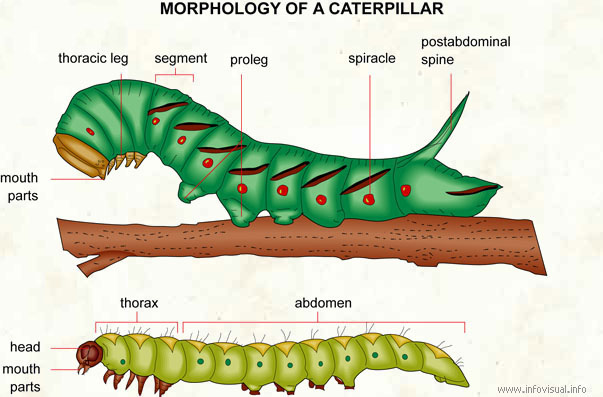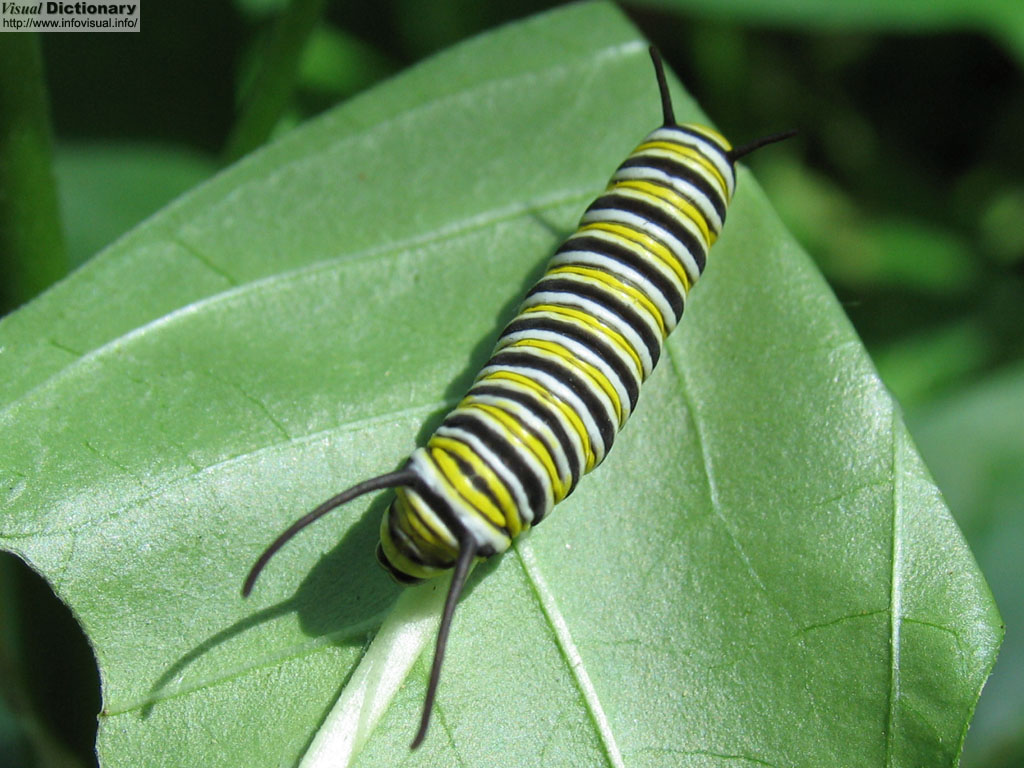Caterpillar

Mouth parts: pieces forming the mouth.
Thoracic leg: locomotive appendage.
Segment: one of the portions of the body.
Proleg: caterpillar appendage not used in locomotion.
Spiracle: entrance to the respiratory system.
Postabdominal spine: hard organ of a caterpillar situated behind the abdomen.
Head: foremost part.
Thorax: central part.
Abdomen: rear part of the caterpillar.
Photo :

A larva is a juvenile form of animal with indirect development, undergoing metamorphosis for example, insects or amphibian. The larva can look completely different from the adult form, for example, a caterpillar differs from a butterfly. Larvae often have special (larval) organs which do not occur in the adult form. The larvae of some species can become pubescent and not further develop into the adult form (for example, in some newts). This is a type of neoteny. It is a misunderstanding that the larval form always reflects the group's evolutionary history. It could be the case, but often the larval stage has evolved secondarily, as in insects. In these cases the larval form might differ more from the group's common origin than the adult form. The early life stages of most fish species are considerably different from juveniles and adults of their species and are called larvae.
Animation : Butterfly life cycle
Thanks to YouTube for allowing us to watch this video.